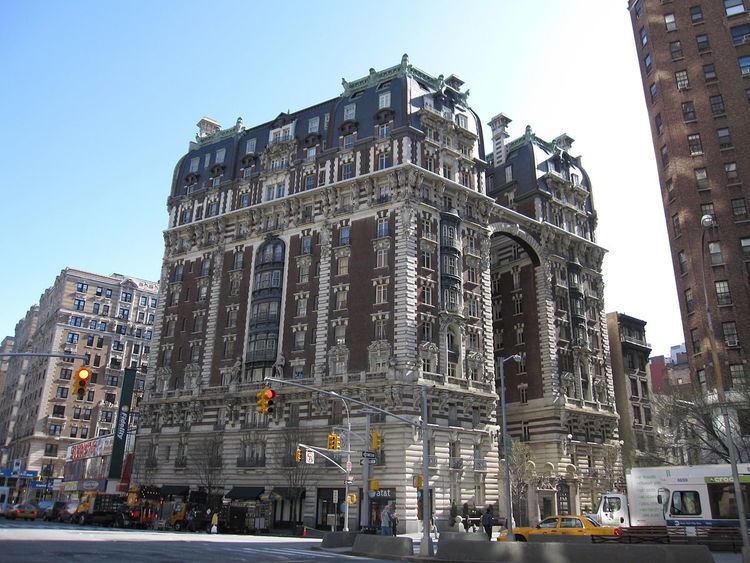 | ||
Headquarters New York City, New York, United States | ||
Janes & Leo was the New York-based architectural firm of Elisha Harris Janes and Richard Leopold Leo (1871/72 — 26 September 1911). From 1898 to 1911, the firm designed and built numerous Beaux-Arts residential structures in New York City, both richly detailed row houses and luxury apartment blocks during the building boom that constructed Manhattan's Upper West Side. Though neither Elisha Harris Janes nor Richard Leopold Leo ever studied at the École des Beaux-Arts in Paris, they worked within its traditions. Their most prominent structure is the ebullient Dorilton (1902), at Broadway and 71st Street, bolder and more sculptural than any professor at the École des Beaux-Arts would have encouraged. Montgomery Schuyler, the critic for the Architectural Record, disapproved of its flamboyant appeal:
"It was a most questionable and question-provoking edifice in the guise of an apartment house. It not merely solicits but demands attention. It yells 'Come and look at me' so loud that the preoccupied or even the color blind can not choose but hear."
The prominent corner site had been purchased by Hamilton M. Weed before the BMT Broadway Line had been finalized. It was the first grand apartment block to be completed on Upper Broadway. When it opened it had the expected separate servant and freight elevators and separate tenant storerooms as well as filtered water and even provision for charging electric automobiles. The Dorilton is entered through a narrow recessed court on 71st Street behind a Baroque wrought-iron screening fence with massive stone piers topped with weighty globes; far above, a masonry arch spans the recess at the ninth-floor level. Above a two-storey basement with channeled rustication, colossal limestone sculptures representing The Seasons survey Broadway.
Richard Leopold Leo was a graduate of the School of Architecture, Columbia University (1895). He built himself a house at Belle Harbor, Long Island, New York. He was a member of the Architectural League of New York.
Like many contemporary firms, Janes & Leo often depended for repetitive sculptural details on mold-cast matte-glazed architectural terracotta imitating limestone; the firm's designers sculpted the models from which the casts were taken.
Selected commissions
Elisha H. Janes continued to practice after Leo's death. In 1913 he provided plans for remodelling in the Twenty-Second Regiment Armory, 67th to 68th Streets, between Columbus Avenue and Broadway (demolished). He formed a partnership with the German-American architect August William Cordes, whose previous partner, Theodore William Emile De Lemos, had died in 1909. Their projects included the New York Women’s League for Animals Building (1913), 348-354 Lafayette Street, (now in the NoHo District) and the Refrigeration Plant and Wholesale Market and Storage Buildings (1925–29) in The Bronx Terminal Market, Hunts Point.
